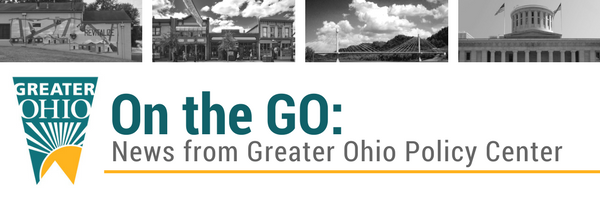| CDFI Website Provides Resources to Local Communities |
|
Ohio’s Community Development Financial Institutions (CDFIs) lend money to people and in places where conventional lending is scarce. The majority of Ohio’s CDFI loan funds are members of the Ohio CDFI Network, which GOPC staffs.
The Ohio CDFI Network has established a website for people to learn more about the industry and individual CDFIs. Even before the pandemic, CDFIs were essential participants in revitalizing Ohio’s legacy communities. During, and after the crisis, they will be indispensable in rebuilding and recovery efforts. |
|
| | | Detroit Shoreway, Cleveland |
|
As “financial first responders” CDFIs are already helping Ohio’s communities weather the COVID-19 storm. Many are offering forbearance to borrowers, several are serving as certified processers for the Payroll Protection Program, and all are strategizing on with community leaders on how they can contribute their expertise to rebuilding.
Learn more about Ohio’s CDFI industry, which serves all 88 counties in Ohio, here. |
|
| What We Learned From Applying To The PPP |
|
Like millions of other small businesses in the United States, GOPC has applied to the Payroll Protection Program (PPP).
We know that many small businesses still haven’t applied. Below we share our experience as one reference point.
We also came away from the process in agreement with many of the ideas outlined in this piece; if there are additional rounds, we hope federal lawmakers will take these observations seriously. - Contact your bank, immediately. We are assigned to a specific banker at our bank and he did a great job shepherding us through the process. Banks are swamped right now handling applications and much of the initial program allocation has been claimed. Now is the time to get to know your banker.
- Consult your bank for information. As the program details were being finalized, accountants, lawyers, philanthropy and others tried frantically to provide information to their clients or constituents on the types of documents they needed for their loan application. We found that many of those emails and web-pages were well-intended, but didn’t adequately prepare us for the application process with our bank. The best source of what your bank will need is your bank.
- Be ready to pull a lot of financial and organization information. The information our bank needed wasn’t particularly complicated, there was just a lot of it. Our banker required information about our annual revenues, incorporation details, detailed records of employee W-2s, benefits, and taxes, Quickbook reports, etc. Our particular bank will require more information from us to finalize the loan paperwork. Because of the volume of applications, bank staff has to move quickly. For your intake call, make sure you are in a location where your files are at your fingertips.
- Loan amount determined immediately but timing less definite. At the end of the intake process, we had a hard number we are seeking a loan for but we didn’t know how soon we’d receive our loan. We did not get a confirmation email from our bank or SBA at the time of the application. One week later we received an email from our Bank saying we have been assigned an SBA procurement tracking number but the timeline wasn’t specified. In talking with partners that have received their loan or are bankers, we think we’ll receive the loan within 10-14 days of receiving the procurement number, but that has not been confirmed either way by our bank.
GOPC is not in a position to advise on the specific application process, but we hope sharing our experience provides some help. Best of luck in your own PPP applications! |
|
|
| As many people know, the 2020 Census kicked off in mid-March and is still going on by mail, phone and web.
What many Ohioans may not know is that this Census will determine if Ohio keeps or loses a Congressional seat in 2021.
The seats are apportioned based on state population numbers and Ohio is “on the bubble.” Based on 2019 population estimates, Ohio will keep our 16 congressional representatives, however, the short term trend from 2018 to 2019 shows that Ohio will lose a seat. Ohio’s population numbers have been growing, just not as fast as other states, and political scientists have been working with estimated numbers over the last decade. Because the 2020 Census is a true count of every resident, it is vitally important for Ohio to get a full and complete census. |
|
Additionally, accurate census counts will ensure Ohio receives the maximum amount of federal dollars it is entitled to through a variety of programs, including pandemic response and recovery funds.
Please encourage friends and family members to complete the Census—every response is vitally important to help Ohio invest in its future. |
|
| GOPC Website Features COVID-19 Resources |
|
GOPC is one of many statewide and national networks sharing information and resources that can help communities manage through the COVID-19 crisis.
You can access this information via our website.
In addition, GOPC staff continue to work remotely as part of the Governor's extended stay at home order. If you need to reach anyone on staff, please find contact information available on the staff page of our website. |
|
|
|

